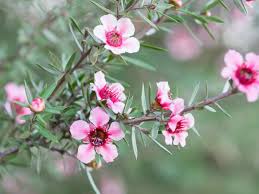Sciencetific Name: Leptospermum scoparium Forst. & Forst.f.
Family Name: Myrtaceae
Mānuka is a prolific shrub-type tree and is often one of the first species to regenerate on cleared land. It is typically a shrub growing to 2–5 m (7–16 ft) tall, but can grow into a moderately sized tree, up to 15 m (49 ft) or so in height. It is evergreen, with dense branching and small leaves 7–20 mm (0.28–0.79 in) long and 2–6 mm (0.079–0.24 in) broad, with a short spine tip. The flowers are white, occasionally pink, 8–15 mm (0.31–0.59 in) – rarely up to 25 mm (0.98 in) – in diameter, with five petals. The wood is tough and hard.
Mānuka is often confused with the related species kānuka (Kunzea ericoides) – the easiest way to tell the difference between the two species in the field is to feel their foliage – mānuka leaves are prickly, while kānuka leaves are soft. Alternatively, the seed capsules of mānuka are large (5–7 mm or 0.20–0.28 inches in diameter) and often remain on the plant year round, whereas the seed capsules of kānuka are much smaller (2.2–4.6 mm or 0.087–0.18 inches in diameter) and are not present for much of the year.
